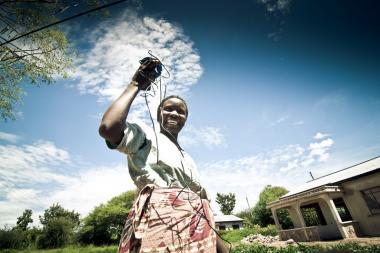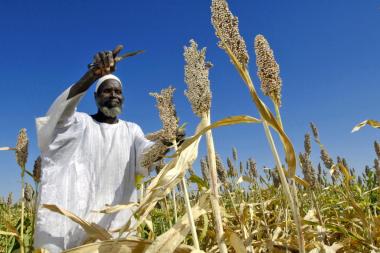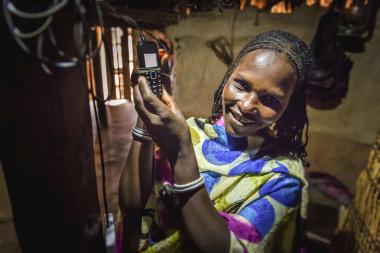Blog
Tax burden keeping Ugandan pastoralists offline despite growing social media opportunity
Smart investment in Uganda's mobile infrastructure for pastoralist markets holds real potential to support resilience building in the country's drylands. This article explains why this matters.
Publisher SPARC
Uganda may be lagging behind its East African peers in terms of mobile infrastructure and affordability, significantly stunting growth for its historically marginalised pastoralist populations.
Internet penetration currently stands at only 29% of the Ugandan population, compared to 87.2% in Kenya and 49% in Tanzania. While digital consultants Kepios have indicated a 15% increase in the last year, these gains are markedly slower in Uganda’s ‘cattle corridor’, which stretches from the northeast to the south western borders.
Dryland ecosystems comprise 43% of Uganda’s total land area, while 90% of the national cattle population is sustained by pastoral and agro-pastoral populations. And yet, despite the demographic and economic significance of pastoralists, due to limited mobile and internet access these groups are excluded from the growing business and civic opportunities offered by social media.
Pastoralist markets - untapped potential
Investing in Uganda’s underserved pastoralist markets could be a smart business move. Social media – especially WhatsApp – could unlock new customers and create entirely new jobs. Indeed, the economic potential is massive. In 2018 alone, mobile technologies and services in sub-Saharan Africa generated US$144.1 billion, roughly 9% of the region’s gross domestic product (GDP). Ongoing research by the Supporting Pastoralism and Agriculture in Recurrent and Protracted Crises (SPARC) programme synthesises key statistics.
According to data from the Uganda Communications Commission, mobile subscriptions were at almost seven sim cards for every ten Ugandans (67%) at the start of 2021. Although about half of all Ugandans have a mobile phone, 71% own only basic or feature phones. Smartphone adoption stands at 30% on average in sub-Saharan Africa, but the figure for Uganda is much lower at just 16%.
Close to 14 million Ugandans are connected to the internet. Despite a 15% increase from last year, however, this still means that 71% of the population remains offline. Since 2G and 3G broadband networks cover more than 80% of the country, SPARC attributes the slower internet penetration to the ‘internet tax’ that affects rural users most – the Ugandan government’s tax on internet bundles is high, with 18% value added tax (VAT) and a 12% tax on data packages. In Uganda, 98% of internet users connect through mobile devices:
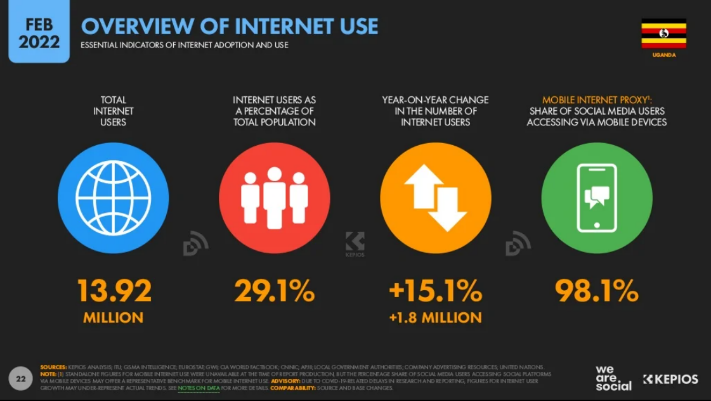
Source: Digital 2022: Uganda by Kepios and We Are Social
Mobile accessibility for rural and dryland areas
Rural and drylands areas are locked out of the 4G clusters in Uganda, relying instead on 2G and 3G networks. In 2019/2020, only 28.8% of households in the pastoralist sub-region of Karamoja had access to mobile phones compared to the national average of 49%. And yet – given the portability of mobile phones, pastoralists’ preference for oral communication and the introduction of innovative applications such as ‘virtual herding’ – more and more pastoralists are finding mobile phones well suited to their way of life.
While urban dwellers are adjusting to the continued shutdown of Facebook in Uganda through expensive workarounds such as Virtual Private Networks (VPNs), however, pastoralists are adversely affected by the shutdowns and face barriers to the business and civic gains of Facebook communities.
For example, with a following of nearly 10,000, the Facebook page The Karimojong was one of the major platforms used by pastoralists in the northeast of the country. With the ban on Facebook, digital connection and trade among pastoralists has shifted to WhatsApp.
Addressing the digital gender gap requires intervention
Encouragingly, social media usage in Uganda grew by 27% between April 2019 and January 2020, despite the government’s introduction of a social media tax known as the ‘over-the-top’ (OTT) tax in 2018. We expect this trend to be mirrored in pastoralist and rural regions, but critically, without intervention, the digital gender gap will increase in tandem.
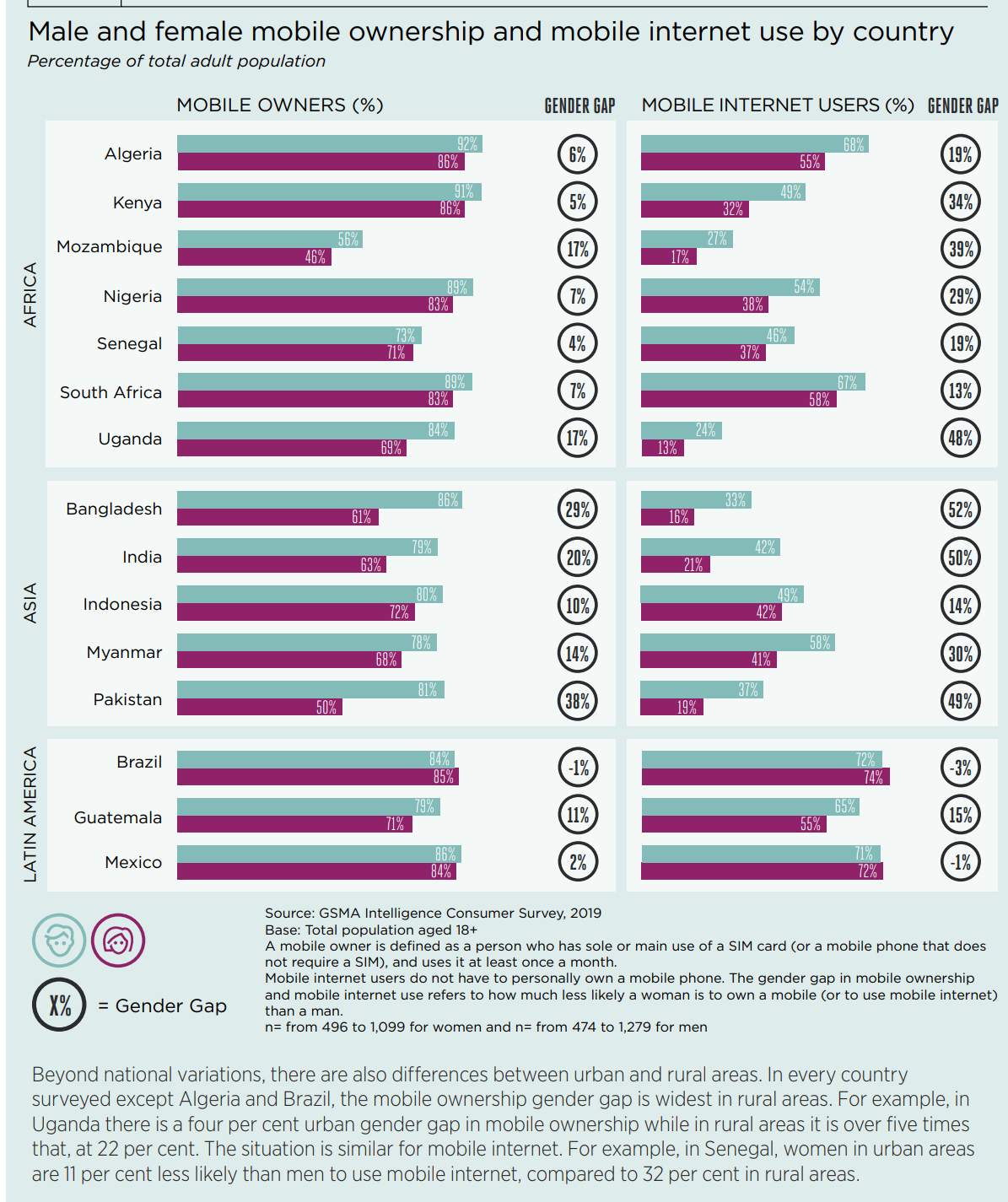
Source: GSMA Mobile Gender Gap report 2020
While regulatory constraints at the national level have stymied growth, global investment is well placed to scale mobile and social media innovations for pastoralist communities in particular. Indeed, 2021 signalled the beginning of the UN Decade on Ecosystem Restoration and the United Nations declared 2026 as the International Year of Rangelands and Pastoralists.
Enterprises are already using WhatsApp to market products and enhance customer services. Imagine activating the millions of pastoralists in Uganda as staff or customers for certain products or services. Influencers could become even more powerful in advocacy and community mobilisation. With new platforms like start-up Wowzi making it simpler to utilise social media and ‘listen’ in real-time to conversations, first-movers could work with and learn from historically marginalised populations.
If you are you working on innovative solutions designed with and for pastoralists and agro-pastoralists in drylands, we would value your contribution to SPARC’s innovation dashboard.
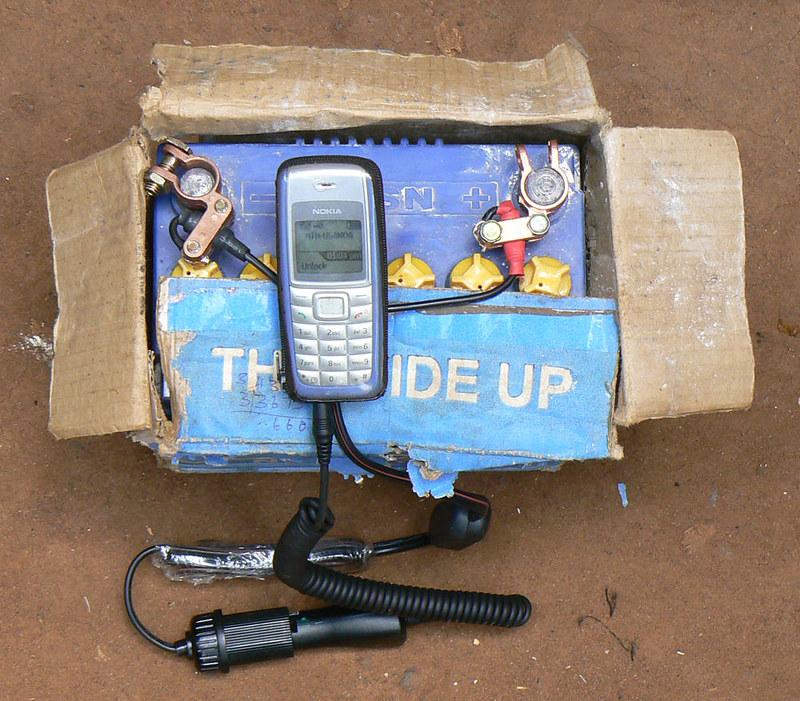
Mobile charging via car battery, Uganda
Credit Image by Ken Banks/kiwanja.net - CC BY 2.0
